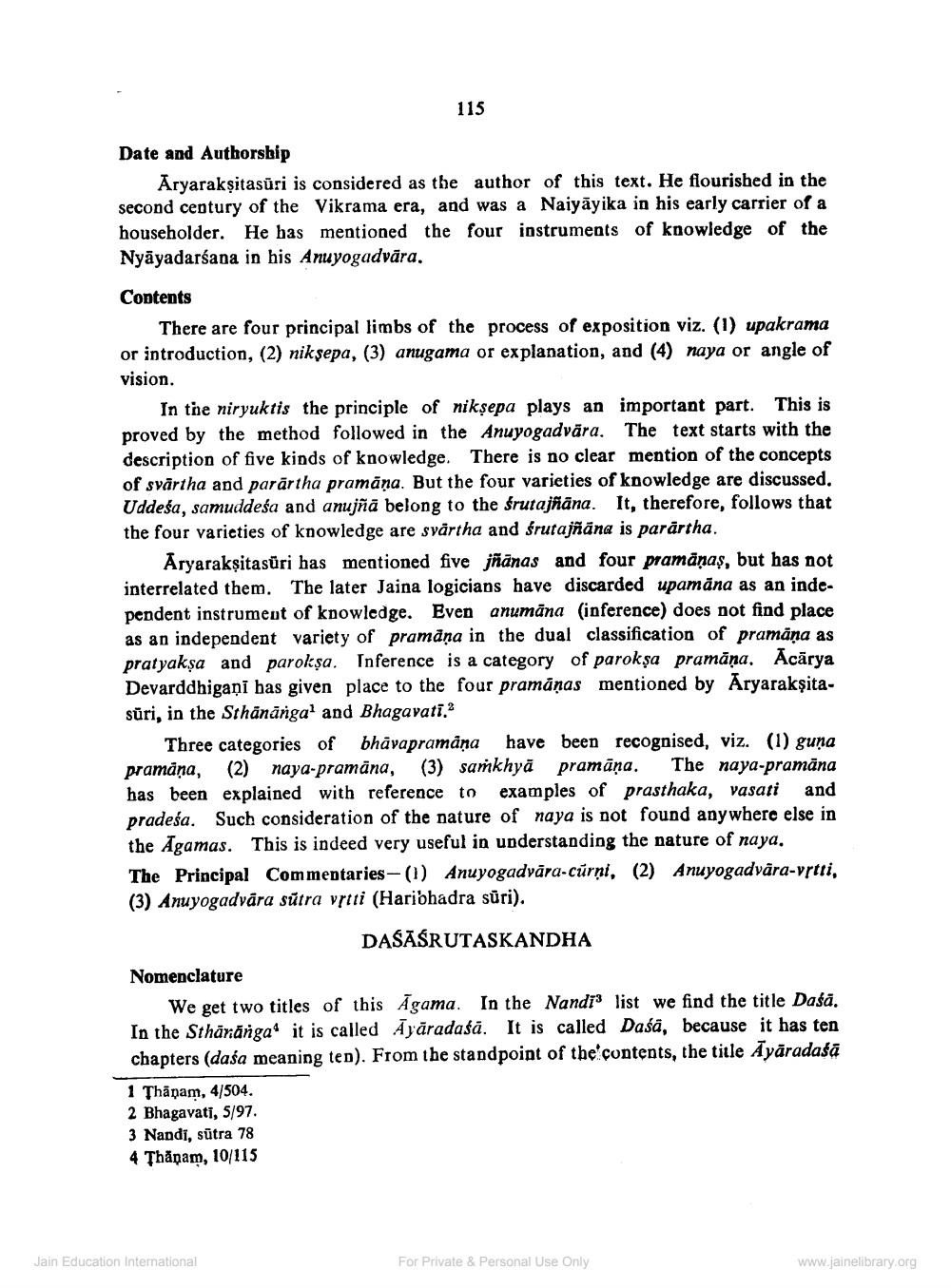________________
115
Date and Authorship
Aryarakṣitasűri is considered as the author of this text. He flourished in the second century of the Vikrama era, and was a Naiyāyika in his early carrier of a householder. He has mentioned the four instruments of knowledge of the Nyāyadarśana in his Anuyogadvāra. Contents
There are four principal limbs of the process of exposition viz. (1) upakrama or introduction, (2) niksepa, (3) anugama or explanation, and (4) naya or angle of vision.
In the niryuktis the principle of niksepa plays an important part. This is proved by the method followed in the Anuyogadvära. The text starts with the description of five kinds of knowledge. There is no clear mention of the concepts of svārtha and parārtha pramāņa. But the four varieties of knowledge are discussed. Uddeśa, samuddeśa and anujñā belong to the śrutajñāna. It, therefore, follows that the four varieties of knowledge are svärtha and śrutajñāna is parärtha.
Aryarakṣitasűri has mentioned five jñānas and four pramânaș, but has not interrelated them. The later Jaina logicians have discarded upamāna as an independent instrument of knowledge. Even anumāna (inference) does not find place as an independent variety of pramana in the dual classification of pramāna as pratyakșa and paroksa. Inference is a category of parokșa pramāņa. Acārya Devarddhigani has given place to the four pramāņas mentioned by Aryarakṣitasūri, in the Sthânăngal and Bhagavati.
Three categories of bhāvapramāņa have been recognised, viz. (1) guņa pramana, (2) naya-pramāna, (3) samkhyā pramāņa. The naya-pramāna has been explained with reference to examples of prasthaka, vasati and pradeśa. Such consideration of the nature of naya is not found anywhere else in the Agamas. This is indeed very useful in understanding the nature of naya, The Principal Commentaries -(1) Anuyogadvāra-cúrni, (2) Anuyogadvåra-vrtti, (3) Anuyogadvāra sūtra vrtti (Haribhadra süri).
DASAŚRUTASKANDHA Nomenclature
We get two titles of this Agama. In the Nandi list we find the title Daśā. In the Sthänānga" it is called Āyäradasă. It is called Daśā, because it has ten chapters (daśa meaning ten). From the standpoint of the contents, the title Āyaradašā 1 Thānam, 4/504. 2 Bhagavati, 5/97. 3 Nandi, sūtra 78 4 Thapam, 10/115
Jain Education International
For Private & Personal Use Only
www.jainelibrary.org




